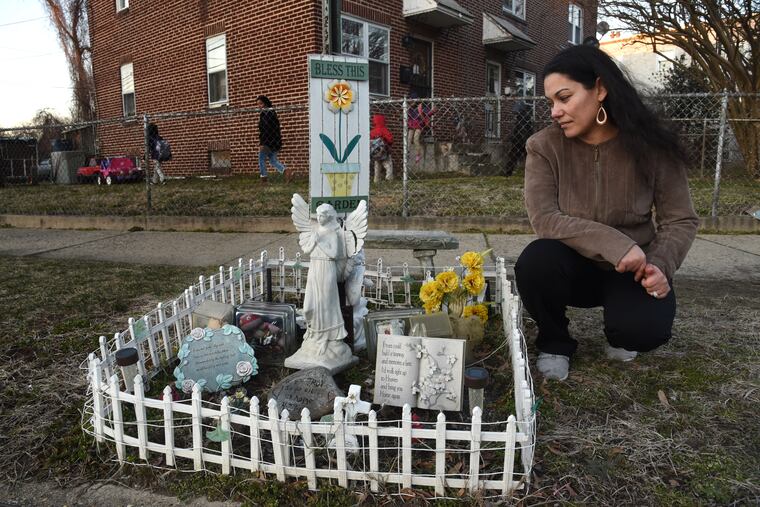Camden shouldn’t sanitize away the truth | Opinion
A City Council proposal up for vote this week is the latest attempt by Camden's leaders to make the city more palatable to outsiders at any cost.

Jeryca Guzman remembers the detective as sounding apologetic on the phone.
He’d called a few weeks ago about the memorial to her murdered brother, Jovany “Macho” Torres — a sheet with his airbrushed likeness and a cluster of candles on the East Camden corner where he was gunned down last October.
The detective told her city workers were removing it, she says, because “it was up too long. Honestly, I was hurt. It was the last place he was at.” For Guzman, who doesn’t have a car, it was also a place she could walk to in order to grieve.
In the three years since Jewels Colon’s son, Rafael “RJ” Vicente, was shot and killed at Haddon and Kaighns Avenues, she’s never gotten a call like that, even though the flowers, stuffed animals, and pictures she places on the sidewalk disappear within a day or even hours. “A memorial shows,” Colon says, “that people actually cared for that person who died.”
» READ MORE: Makeshift memorials would be cleared after 15 days. Is that enough time to honor the dead?
For Angela Medina Trader, the dismantling of her carefully manicured memorial to son Troy Anderson at the Fairview intersection where he was gunned down in 2014 would induce outrage. “If I came out and it was gone?” she says. “It’s war.”
At the Feb. 12 Camden City Council meeting, Council President Angel Fuentes introduced an ordinance that would regulate roadside memorials. It would prohibit them from obstructing public passage or including lighted candles or alcoholic beverages, and calls for their removal by the city after 15 days. The measure faces a final vote at Council’s meeting Tuesday. Fuentes has said that the idea was driven by residents’ concerns about quality of life, property values, and traumatizing children.
It is also the latest attempt by city leaders to make Camden more palatable to outsiders at any cost.
When I began covering the city intensively in 2011, Camden was labeled a war zone, which was just as shallow a narrative as the cheerleading “Camden Rising” slogan is now.
At times — like in 2014, when homeless tents close to the city center were bulldozed to reappear in more remote enclaves, and in 2017, when the decision was made to move a methadone clinic out of downtown to a struggling neighborhood despite an outcry from residents — it’s been a matter of putting unpleasant things in places where fewer people will see them.
At others, the goal seems to be eradication. The city’s successful needle-exchange van, which dispensed clean needles and tested for HIV and hepatitis, was displaced by Holtec International’s new manufacturing plant, then disappeared for two years while lawmakers dragged their feet on approving other locations. Although the van reopened at a new location last fall, Martha Chavis, executive director of Camden Area Health Education Center, which oversees the program, says the revival is “slow going.”
Rutgers-Camden professor and city resident Stephen Danley calls these sorts of closures “sanitizing.”
“Camden is deeply invested in attracting suburbanites, and any public art or facility seen as detrimental to that is swept under the rug,” he says, “even if it’s important to the community here.”
He finds the city’s war on graffiti particularly wrongheaded: “The same thing we’re erasing here has become a tourist attraction in New Orleans."
Murder has been harder to hide.
City leaders need only remember the field of crosses planted next to City Hall in 2012 to mark the record-breaking homicide total that year — with residents gathering to grieve while politicians squirmed.
For Nyzia Easterling, who founded the nonprofit organization Saving Grace to support families scarred by violence, city officials are missing the point. She would rather they create after-school activities to keep kids out of gangs or build a community trauma center.
“They want to paint a different narrative than what’s truly here,” she says. “What are you putting in place to fix the things you’re trying to hide?”
In a difficult city, it is a question that lawmakers should have to answer before throwing away any more commemorative teddy bears.
April Saul is a photojournalist in Camden. Her work can be seen at www.facebook.com/aprilsaulincamden/